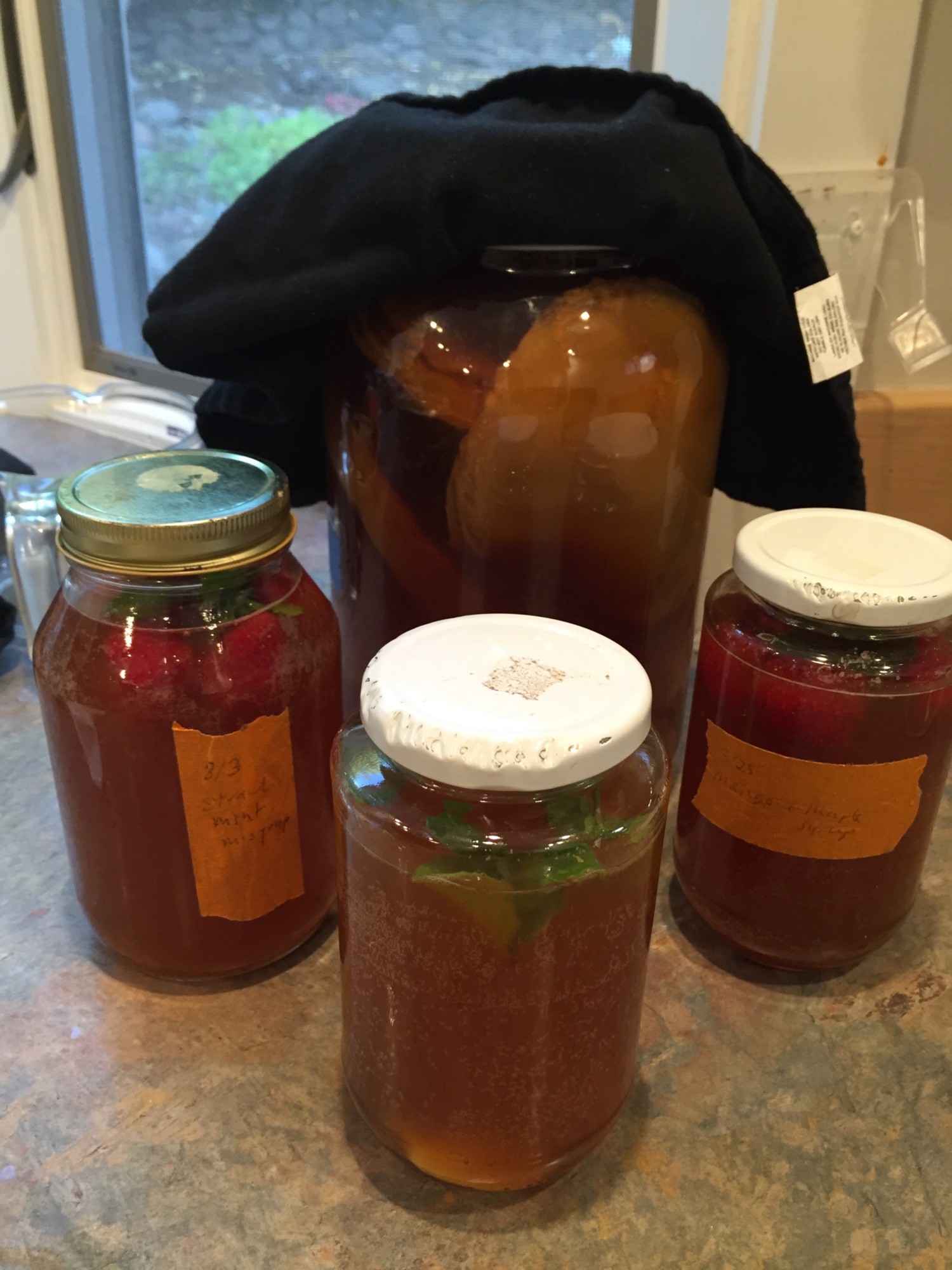I know I’m coming to the kombucha party a little late.
The first time I had this fermented, slightly vinegary drink was this past summer at my friend Liz’s farmhouse in Vermont. She handed me a tall glass of her homemade kombucha on the rocks, a handful of plump blueberries floating around in the tea-colored brew. “You’ll like it,” she promised, seeing the tentative look on my face.
I took a sip. It was a hot, humid day in the Green Mountain State. We’d just returned from a long sweaty hike, swatting away black flies and scrambling up steep rocks, so the cool, slightly carbonated liquid was refreshing. I liked it. The more sips I took, the more I enjoyed it. In fact, I drank a glass of icy kombucha every day for the rest of our stay, and I decided that upon my return to California, I’d figure out how to brew a batch for myself.
First things first: I needed a scoby. Officially known as a SCOBY, I had to get my hands on my very own Symbiotic Colony of Bacteria and Yeast. Like the yeast starter for sourdough bread, a scoby is the magical “mother” that transforms simple sugar and black tea into a tart and tangy beverage with a plethora of probiotics and that may (or may not) be the secret to a strong immune system, a healthy gut and maybe, just maybe, eternal life. (Kombucha fans are devoted, to say the least.)
I turned to NextDoor, our online community bulletin board and posted a message to see if anyone had a scoby to spare. Within a day, I had three responses. I arranged to meet a woman named Diane at her house the next afternoon. On my way over, I stopped at the hardware store to pick up a one-gallon Mason jar, the only piece of “equipment” required for making kombucha.
“Aren’t they pretty?” Diane asked me, pointing to two gallon-sized jars sitting on her kitchen counter, each covered with a paper towel and secured with a rubber band. I looked closer. Floating inside each tea-filled jar was an enormous, white, flat, round disc, each one about an inch thick.
“Are those the mothers?” I asked, a little nervously. Diane beamed.
“They are,” she said. “And my scobys have a real provenance. Do you want to hear?”
I sure did. Turns out Diane’s scobys came from Tassajara, the world-renowned Zen Mountain Center in California’s remote Carmel Valley. About a year ago, Diane told me, the beloved monk in charge of brewing kombucha at the retreat was ringing the gong for early morning meditation when he suddenly and tragically dropped dead. As grief spread through the community, devotees wondered, who will keep the kombucha going? In short order, members of the Tassajara community came from near and far to collect a scoby from the revered kitchen and keep this line (perhaps “lineage” is more accurate) of kombucha alive.
I was floored. “We’re scoby sisters!” I declared as Diane scooped out a mother from her jar and put it on a clean plate. I touched it. The scoby was cool, clammy and, frankly, a little jellyfishy. On closer inspection, I discovered it was made of individual, crepe-like layers. Fermentation works in mysterious ways.
For now, there are no clinical trials or scientific studies proving the health benefits of kombucha, so the jury’s still out on whether it holds the secret to health and happiness. But I have to say I’m kind of hooked. I’ve come up with a recipe I think is pretty delicious, and I’ve also made a 40-second time-lapse video of me making a fresh batch. Want to join me in scoby sisterhood? Go forth, my friend, and getcha’ some kombucha.
Willow Older is a nationally and internationally published writer and a long-time professional editor. She lives in Northern California where she runs her own editorial services business and publishes a weekly newsletter called Newsy!.
Originally published at medium.com


